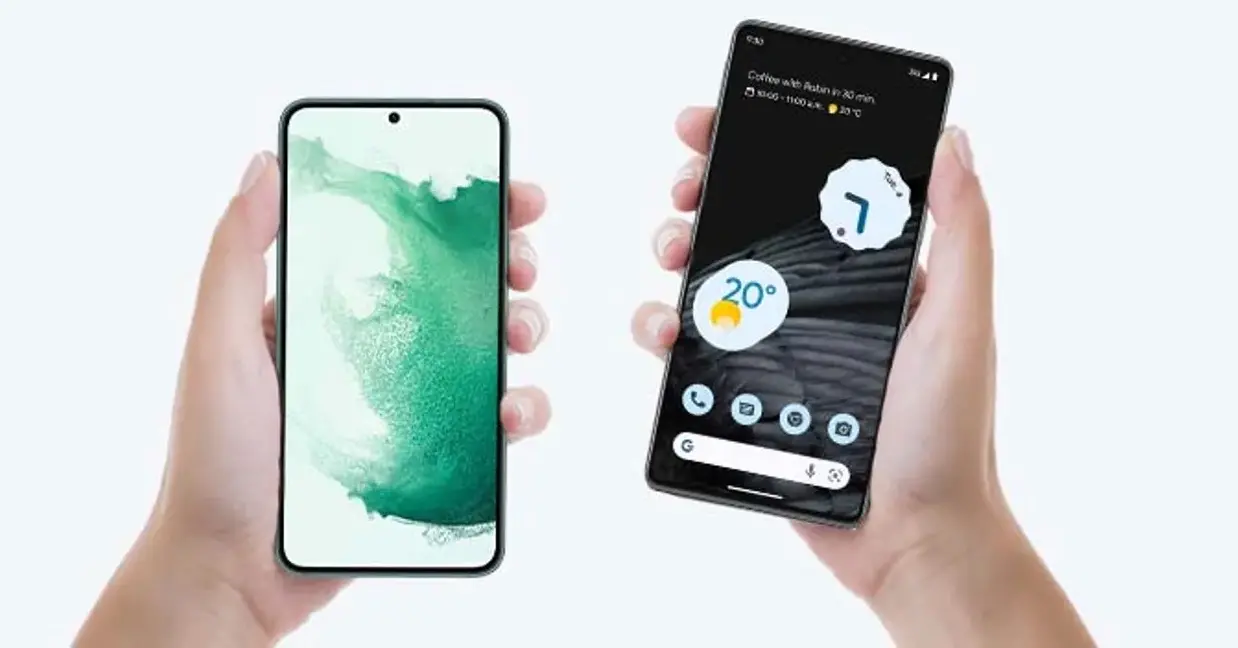
Is this year’s “Back to School” season the right time to buy your child their first smartphone. The question “What age should my kid have a cell phone?” is a common one in this digital age where having a mobile device has become a necessity. While there’s no one-size-fits-all answer to this, there are several options for you to choose from to find a balance between your child’s safety and social development.
This guide will walk you through some of the key factors to consider, from figuring out the right age for your child to own their first smartphone, to choosing between an Android or an iPhone, and even tips on promoting responsible use.
Why is a cell phone necessary for your children?
Just like getting a new set of school supplies, equipping your child with a smartphone can help them navigate the school year with greater ease. Whether it’s being able to contact you in case of emergencies, staying updated with school announcements, or simply connecting with classmates and friends, a cell phone can provide several benefits for your child’s school and social life. But deciding when to provide the device, or even what type of phone is best for your child, can be a daunting task.
Understanding the “right age”
The decision of when to give your child a cell phone largely depends on individual circumstances and the child’s maturity level. For some parents, providing their child with a cell phone is a matter of safety. It’s comforting to know that your child can reach you anytime, or vice versa, especially during after-school activities or when they are away from home. For others, it’s about staying connected, not only with friends but also with educational resources that can supplement their school learning. On the other hand, it’s essential to consider the potential challenges that can arise from giving a still-maturing child a phone too early. These may include exposure to inappropriate content, unhealthy screen time habits, and potential cyberbullying.
For younger children, you may consider basic cell phones, which allow calls and texts only, instead of a smartphone. Older children or teenagers might benefit from smartphones that offer more features. It’s crucial to assess your child’s responsibility level, their need for a phone, and how it can impact their day-to-day life, especially as they head back to school. It’s not just about providing a device, but also about equipping them with the skills to use it responsibly.
Choosing the right device for your child

As you gear up for the new school year and decide it’s time for your child to have their own phone, the next step is to decide what type of phone, platform, and features you should choose. Will your child benefit most from an Android or an iPhone?
Androids and iPhones are different when it comes to user-friendliness. Both platforms provide robust parental controls that allow you to restrict app downloads, limit screen time, and monitor online activities, however the former provides a lot more options in brands, customizability, and devices while the latter provides a simpler experience that integrates well with other Apple products that may be in your home.
Android phones offer a wide variety of options in terms of price range and features. Whether you’re looking for budget-friendly models or high-end devices, Android has something for everyone. This flexibility makes Android a good fit for kids, offering customization, and often including helpful features such as a memory card slot for additional storage. An iPhone offers a seamless user experience, consistent updates, and a robust ecosystem—useful if you use other Apple devices at home. While iPhones are usually pricier, the investment can be justified if you already have an existing Apple ecosystem in your family.
For teenagers who are ready for more responsibility and freedom with their device, an Android phone might be the preferred choice due to its customization options and variety. It’s also important to note that iPhones are often popular among teenagers for their status symbol and ease of use.
When preparing for the school year, you might also want to consider prepaid phones and phone plans. These devices offer a budget-friendly alternative and can help teach your child or teen to manage their phone usage, as they come with a finite amount of data, calls, and texts per month.
Protecting your investment with a phone case

Once you’ve selected the ideal phone for your child, it’s important to protect that investment. Cell phone cases not only provide an extra layer of protection but also allow kids to personalize their phones. Durability is key when shopping for a case as children can sometimes be careless. Look for cases that can withstand drops and bangs, common occurrences in a school environment. Cases for iPhones or Android phones for kids come in various styles and materials, from shock-absorbent rubber to hard plastic with built-in screen protectors.
A variety of fun and colourful designs are available too, so children can choose cases that reflect their personalities and interests. For teenagers, who may prefer something more sophisticated, cases that strike a balance between style and protection are ideal.
Teaching smartphone etiquette to children
As your child gets used to their new phone, it’s crucial to take the time to teach them responsible smartphone usage. As a parent, you have the unique opportunity to instill positive habits early on, shaping your child’s understanding of how to use technology wisely and courteously.
Start by establishing some ground rules. This might include limiting phone usage during homework time, setting a curfew to ensure phones don’t disrupt sleep, and insisting on phones being kept out of sight during mealtimes. It’s essential to model these behaviours yourself to set a positive example.
Finally, touch on the topic of digital etiquette, or “netiquette” (read this article for some helpful tips). Emphasize the importance of being respectful online, not texting during classes or important conversations, and avoiding phone usage when it is impolite and can infringe on others’ experiences, such as at the movies or during performances.
Teaching your child about online security and safety
Cyber bullying, hacking, and predatory behaviour are real threats to anyone spending time online. It is, therefore, very important to teach your kids about cyber safety when giving them their first phone. Help your child understand not to share personal information or passwords online, to be mindful of what they post on social media, and to only communicate with people they know and trust. Set boundaries about which apps are completely off-limits. Explain the potential risks and ensure they know what to do if they encounter anything that makes them uncomfortable.
Balancing screen time and health in tweens and teens
Equipping your child with a smartphone opens up a world of possibilities for learning and communication. However, it also introduces the challenge of screen time management. Excessive screen time can impact your child’s sleep, academic performance, and overall health and mental development. As your child navigates the exciting journey of owning a smartphone, it’s your role as a parent to guide them towards responsible and healthy usage, setting them up with healthy habits for the school year and beyond.
To strike a good balance, consider setting screen time limits. Both Android and iPhone platforms offer built-in tools to help you monitor and control your child’s screen time. You can set downtime, during which only phone calls and certain apps are allowed, and you can set app limits, which restrict the amount of time your child can spend on specific apps each day.
Encourage your child to engage in physical activities and hobbies that don’t involve screens. Spending time outdoors, playing sports, reading books, or playing an instrument can provide a healthy counterbalance to screen time. It’s also worth educating them about digital eye strain, which can result from prolonged screen time. Encourage regular breaks from the screen, using the 20-20-20 rule as a guideline: every 20 minutes, look at something 20 feet away, for 20 seconds.

In an increasingly digital age, giving your children a phone can be a powerful tool for communication, learning, and safety. Navigating the world of kids’ cell phones doesn’t have to be intimidating. By carefully considering the right age for your child to get a phone and choosing the right device and phone plan, you can make an informed decision that best suits your child’s needs and lifestyle. Most importantly, by teaching your child smartphone etiquette and promoting a healthy balance between screen time and other activities, you can ensure that their first smartphone is not a distraction, but a tool that fosters growth.
This article was drafted using AI technology and then reviewed, fact-checked, and revised by a member of our editorial team.




